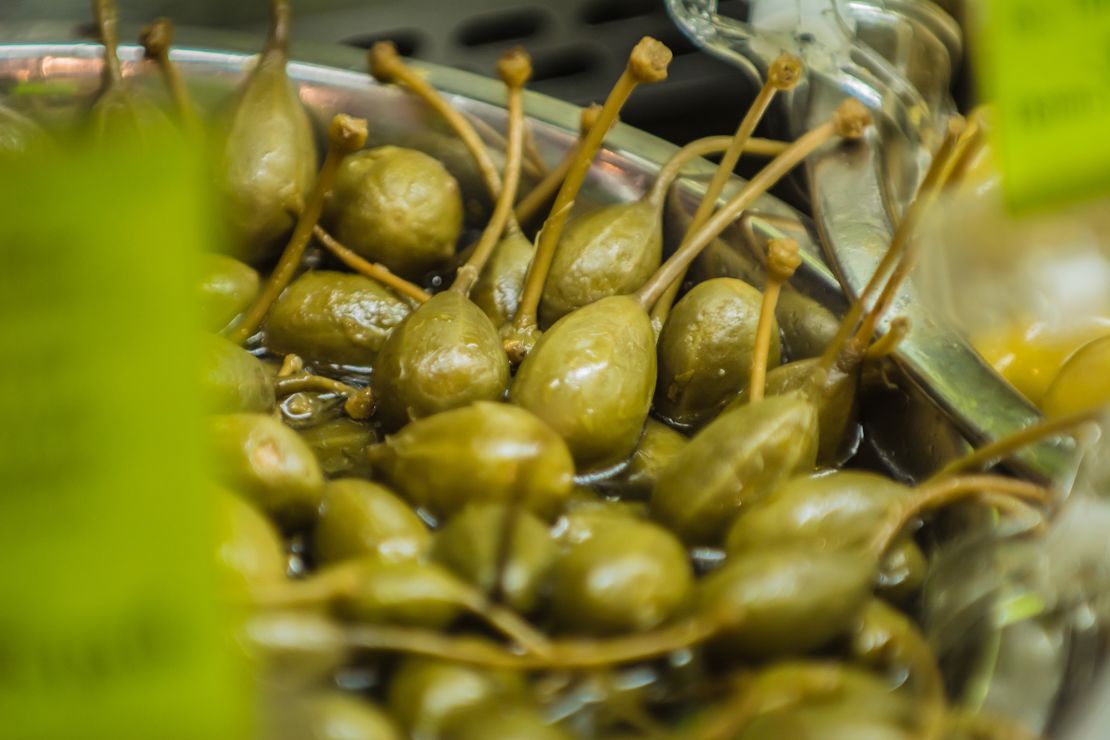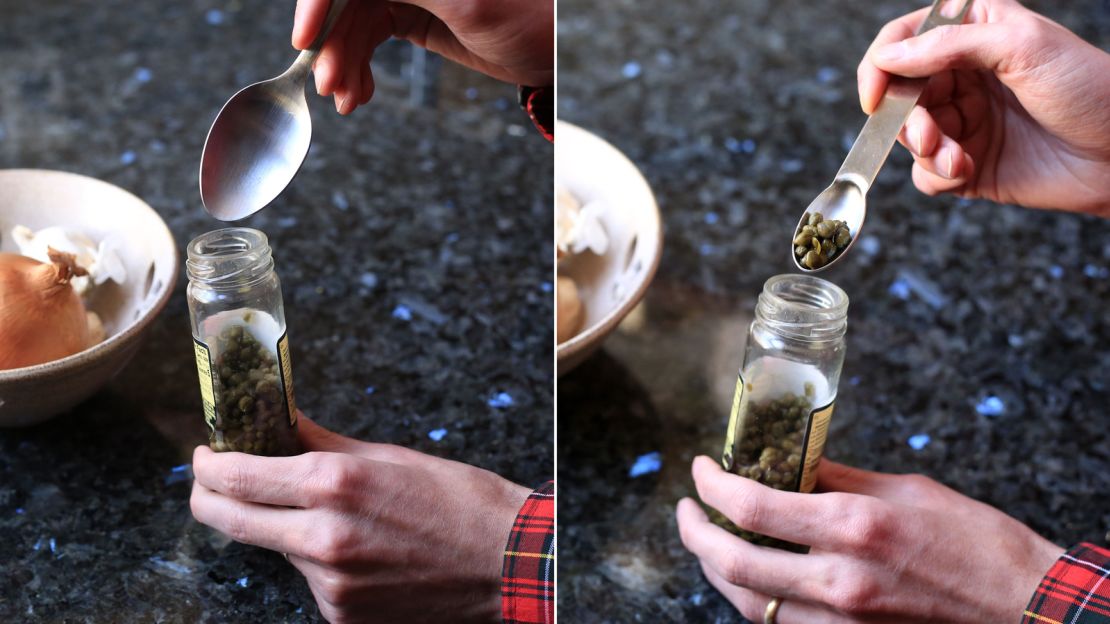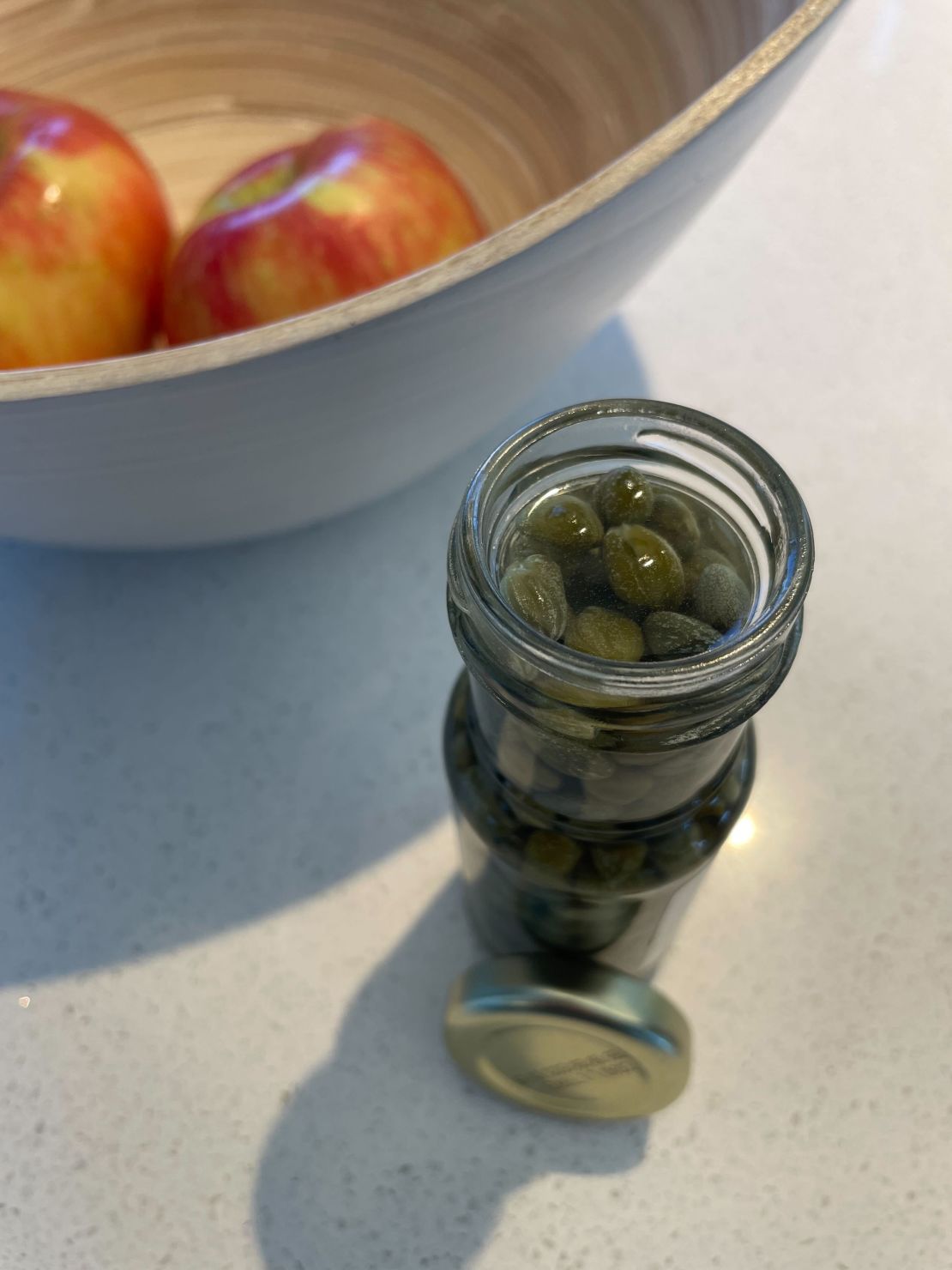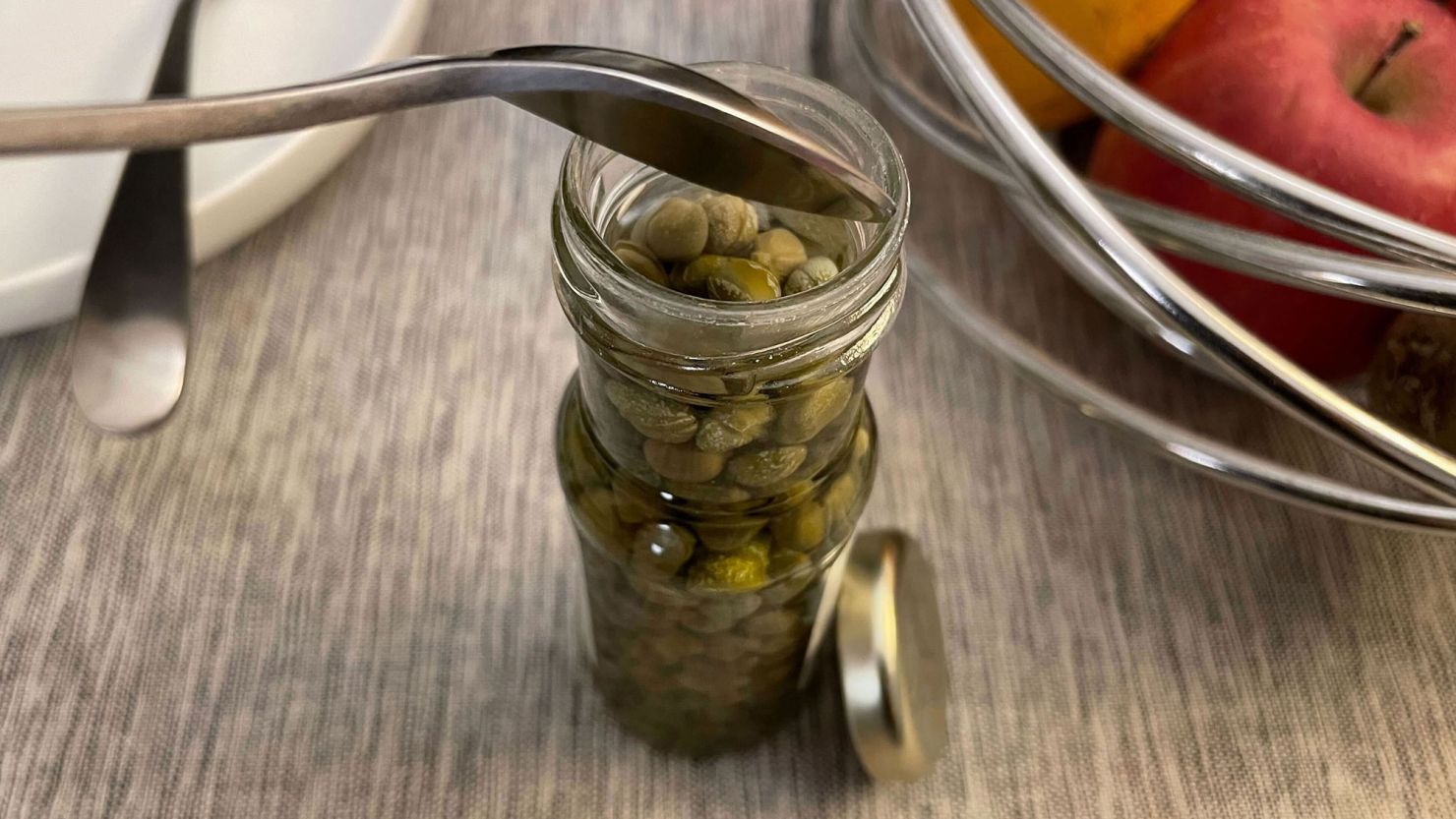There are certain bad design decisions that seem to persist for no good reason. Like when you buy a pair of scissors but can’t get to them because they’re trapped inside a hard plastic shell that requires scissors to open. Or the Apple mouse, with its port on the underside, rendering it unusable while charging.
These frustrations don’t make a product bad, per se; they’re just irksome. The kind of little frictions that make you think, Why’d they do that?
No standard spoon can fit inside the narrow openings of the typical glass caper jar. Dumping them out risks loss of essential brine. Even if you do have a supremely tiny utensil to fish them out, there’s no single-dip solution: At best you can capture three or four in one go, and any piccata recipe or lox spread worth its salt calls for, like, at least a dozen capers. Why, dear God, why do they do that?
This is a story about one of modern life’s least consequential but most acutely annoying experiences: getting a sufficient number of capers out of those dollhouse-size jars they’re sold in.
The short, unsatisfying answer? Capers are expensive, so producers sell them in smaller jars to make each unit more affordable. But the reason for tall jars instead of squat ones is a longer story.
The skinny on capers
For the uninitiated, capers are the unripened, pea-sized buds of the prickly caper bush, or Capparis spinosa. Let them ripen, and you get caper berries, which are sort of like olives. The caper bush is a hardy shrub, happiest when rooted on a rocky cliff under a hot Mediterranean sun.

Straight off the vine, capers are terribly bitter. But someone, somewhere (likely hundreds of years ago), got it in their heads to take those practically inedible buds, dry them out in a boatload of sea salt and then rehydrate them.
Once they’re cured and pickled, capers become perfect little salt bombs to drop into a niçoise salad or a chicken piccata. It’s not illegal to order a lox bagel in New York City without capers, but it should be.
Why such narrow jars?
A definitive explanation for the svelte glass jar that they come in is hard to come by. Major caper purveyors Cento and Goya did not respond to requests for comment.
Reddit threads on the subject tend to upvote the theory that the tall, skinny glass jars keep the capers fresh by ensuring they stay submerged in their brine.
Russell Zwanka, the director of the food marketing program at Western Michigan University, echoed that as a plausible theory.
“I do understand the frustration of a spoon not fitting, and I don’t have an answer for that,” Zwanka said. “I don’t know why you can’t make it just another half an inch bigger.”

There is another, more profit-focused theory. It’s courtesy of Jeff Mezzetta, the president of the privately owned California food label Mezzetta (which sells its capers in a variety of jar sizes, all with enough clearance for a regular teaspoon).
Skinny jars just look nicer, Mezzetta says.
After all, there’s little practical value to the skinny jar. In fact, it’s far less practical, from the producers’ standpoint.
“The taller and the thinner the jar, the more difficult it is to package — because they’re tippy on the production lines, and with the smaller opening, they’re harder to get into the jar,” said Mezzetta, a connoisseur so passionate about the garnish that he even named his dog, a black Labrador, Caper.
His take: “It’s primarily because some marketer feels that they’re going to look more elegant on the shelf.”
There are sound economics behind that theory.
Supermarket psychology
Food packaging does a lot of different things, Zwanka says. It of course keeps food fresh, prevents waste and makes sure the product can be shipped efficiently.
“But we also want to make sure that products are affordable,” he said.
Because capers are expensive — and not exactly a staple of the American refrigerator, although sales are rising, according to Mezzetta — food companies opt for smaller jars to keep down the per-unit cost for consumers.
Zwanka notes a similar packaging dilemma with saffron, one of the world’s most expensive spices. When you buy it at the grocery store, it’s perhaps disheartening to see a few tiny strings packed into the jar for $18.

“You need the jar so it’ll fit in the in the spice rack,” he says. “But you also couldn’t fill that jar, or it would be $200.”
If you’re only using a few capers a year, a tiny jar that can live unobtrusively in the fridge makes sense for most people. Prices vary, but a 3-ounce jar runs you about $4 at the grocery store.
Still, you might wonder: Why is it a that jar so tall and narrow you need a nail file to stab at the tiny green orbs?
Blame the success of Skinny Can Chic.
Strolling down the soda aisle lately, you’ll notice that beverage cans have slimmed down, squeezing the same 12 ounces of fluid into a more slender package.
“Consumers see slim cans as more sophisticated, which makes them feel more sophisticated,” Duane Stanford, the editor of industry trade publication Beverage Digest, told CNN last year.
The same thing is happening in the beer aisle, Zwanka notes.
“They’ve all adapted what you would consider the Red Bull can, because Red Bull kind of started it. But now anybody who wants to signify that it is thinner, lighter, less calories, maybe healthier … they put it thinner cans.”
Kitchen hacks
Labor costs are the main reason capers cost more than you might expect from what is essentially a pickled weed. The vast majority of the capers at the grocery store are grown in the wild in places like Morocco, Tunisia, Greece and Turkey, and they are picked by hand.
“It takes you an hour to pick a kilo, if you’re very fast,” says Brian Noone, who runs a wholesale caper plant nursery in Adelaide, South Australia. “The other problem is, people tend to think the smaller ones taste better…But it’s a lot more work to get the smaller ones,” which are called “non-pareils.”

Once they get to your kitchen, there are a number of hacks for getting them out of the jar.
A Reddit page on the universally frustrating process is titled: “getting capers out of those stupid f*cking narrow jars.”
Among the tips and tricks offered by Redditors:
Try a a long metal bar spoon or a half-teaspoon measuring spoon. Other common utensil suggestions: An old fashioned potato peeler, chef’s tweezers, a tiny melon baller, a wide-mouth boba straw.
“I use a tiny fork. Like the kind for shrimp cocktail or crab,” offers one user.
“Korean dessert fork for me! It’s a tiny fork head on a long chopstick-shaped handle,” says another.
But perhaps there’s no solution quite as simple as going all in — and dumping them all out.
As one Redditor said: “I’ve never been in a situation where I don’t decide to just use the entire tiny jar for what I’m making.”









